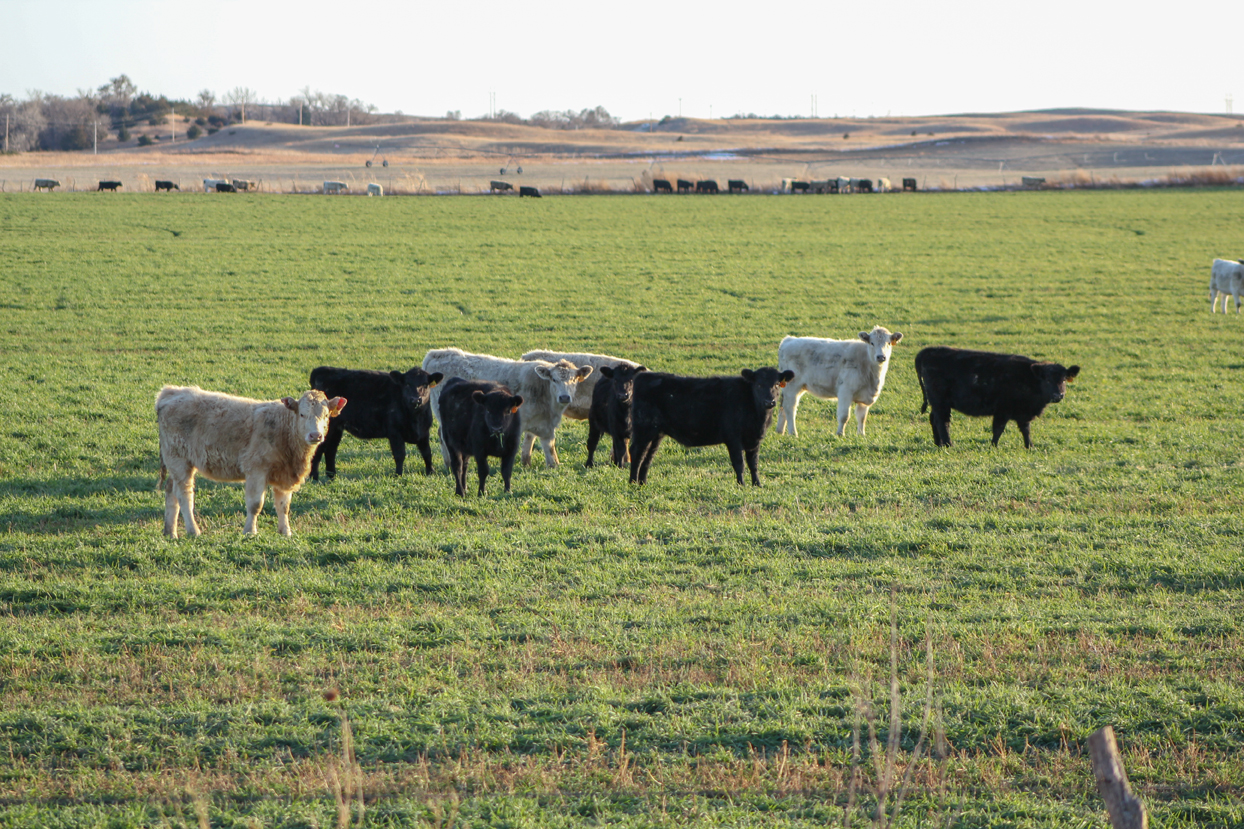Getting the Most Out of Grazing Cereal Rye and Other Winter-hardy Small Cereals

Listen to a discussion of the content in this article on this episode of the BeefWatch podcast. You can subscribe to new episodes in iTunes or paste http://feeds.feedburner.com/unlbeefwatch into your podcast app.
When grazed from early April to early May, forage quality of cereal rye, winter triticale, and winter wheat is similar. All three species can be very high quality. When managed correctly, growing calves can gain 3 to 4 lbs/day. Cereal rye can have greater growth during cooler conditions compared to wheat or triticale. This is the reason it can often provide earlier spring grazing. On the other hand, triticale retains its feed value better into late spring since it does not mature as quickly. This makes it well-suited for hay and silage, or for grazing well into June. If planning on harvesting hay after heading, make sure to choose an awnless variety to increase palatability.
When grazing, the key to optimizing performance of cattle with high nutritional requirements, such as growing calves or lactating cows, is to keep the grass from becoming overly mature. Remember, with lactating cows you want them on an increasing, or at minimum, steady plane of nutrition as they move into breeding. Managing forage maturity is key to maintaining availability of high-quality forage. Small cereal forages grow fast and mature rapidly, so it is important to actively manage the grazing to ensure the plants are not allowed to become overly mature.
Begin grazing when the plants are about 5 to 6 inches tall and manage to keep the maximum height at 8 to 10 inches. Rotational grazing with higher stocking densities can assist with keeping the plant maturity more uniform and reduce selective grazing. Look ahead 1 or 2 pastures and move based on how the grass is recovering in those pastures. These forages grow fast and recover from grazing fast. The most common mistake when spring grazing small cereals is letting the grass get ahead of the cattle. It is important to increase stocking density as the spring progresses to ensure the cattle can keep up with the rapid forage growth. This can be achieved by either adding more cattle or reducing the number of acres being grazed. A good starting point is about 0.5 cow or 1 stocker calf per acre in early spring and increasing from there.
Like most cool-season grasses in early spring, small cereal forages are also high in potassium. This means there is a need to provide supplemental magnesium as potassium interferes with magnesium availability to the animal. A free choice mineral with a targeted 4 oz per day intake should contain at least 10% magnesium to prevent grass tetany in lactating cows and 5% magnesium to increase gains in stocker calves.
Remember, the key to getting the most out of grazing small cereal forages is managing the maturity by having the “right” amount of grazing pressure.
Interviews with the authors of BeefWatch newsletter articles become available throughout the month of publication and are accessible at https://go.unl.edu/podcast.
